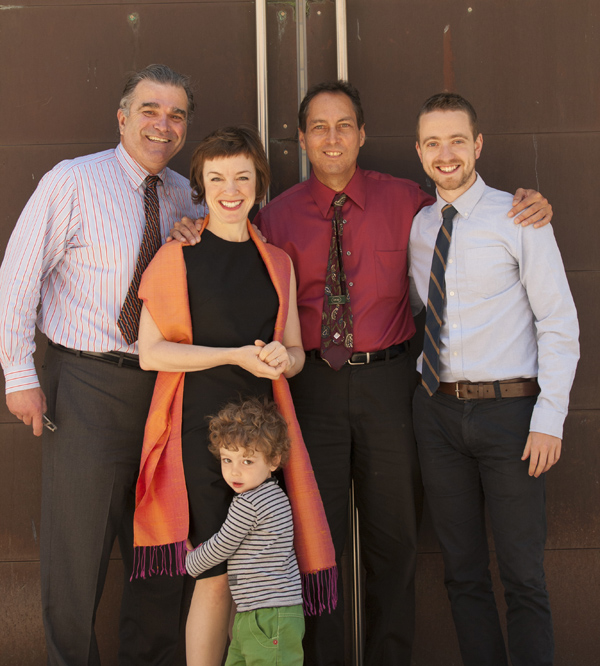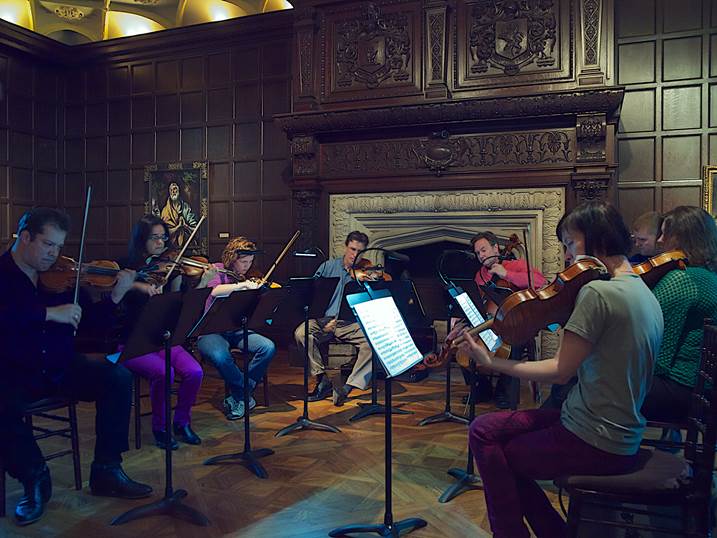
Georges Braque, Lemons and Napkin Ring, 1928. Oil and graphite on canvas, 15 3/4 x 47 1/4 in. The Phillips Collection, Washington, D.C. Acquired 1931 © 2013 Artists Rights Society (ARS), New York / ADAGP, Paris
One of the intriguing aspects of investigating an artist and their practices is delving into the context of his or her time, understanding the historical and formative moments that helped shape their aesthetic and world view. Confronting the maelstrom of social, political, and artistic upheaval of the 20th century can be an intimidating, if elucidating, obstacle in the consideration of an artist. Painters, writers, and musicians of this period were all tackling the same aesthetic questions and quandaries of expression and the human condition. The art and music of this period are often viewed as interweaving yet divided entities. A comparative look at both almost feels too big to confront, the possibilities too vast or too vague to be meaningful. In the case of George Braque, whose works are currently on view in the Georges Braque and the Cubist Still Life, 1928-1945 exhibition at the Phillips, we can learn much from looking further into history too.
In works that predate this exhibition, Braque had made explicit reference to his admiration of the Baroque composer J.S. Bach (1685-1750). Between 1912 and 1913 he stenciled Bach’s initials on his Homage to J.S. Bach, as well as musical forms that Bach employed, like the Aria, as in the Aria de Bach of 1913. These explicit placements of Bach’s name yield more than mere admiration of his music and art historians have found an analogue between Bach’s polyphony and counterpoint and the angles and perspectives of Braque’s cubist works. If we think about the form that is most associated with Bach, the fugue, we find a careful balance of four distinct voices woven together. In listening to his many fugues it is possible to feel a parallel with the sense of line and architecture in Braque’s painting. Yet beyond this fairly abstract comparison there are similarities in terms of form and practice between the two men. The writer and art historian responsible for much of the early scholarship on Braque, Carl Eisenstein, speaks of Braque’s meticulous and tireless pursuit of perfection in his still life variations. By limiting himself to specific forms and motifs, Eisenstein says, Braque heightens his images to new levels of technical achievement. The same sense of economy of means applies to some of Bach’s music: in choosing a single theme and subjecting it to a series of variations, he evinces the endless possibilities that can be generated from a single musical idea.
The initials that Braque stenciled into his homage, B-A-C-H, actually form a four note musical motif in German (B-flat, A, C, B-natural), which many composers have used in their music, most notably Bach himself in his Art of Fugue. From this four note musical cell Bach’s weaves a thematic tapestry of ceaseless invention, in the same way that Braque’s paintings reimagine motifs with nuanced differences and variations. Perhaps the similarities extend further: by 1940, Braque had produced 24 variations of the napkin ring motif in his still life compositions, many of which are on view in this exhibition. In musical harmony there are 24 major and minor keys, for each of which Bach produced a prelude-fugue combination in one of his most beloved and iconic works: The Well-Tempered Clavier. As a trained musician and lover of Bach’s music, Braque would have known and heard these works, and doubtless he would have appreciated them for the artistic and technical practices that formed such an integral function in his own life and career. Certainly it is true that beyond the guitars, mandolins, and instruments that appear in his still life works, Braque was a musical painter beyond the canvas.
Jeremy Ney, Music Specialist


